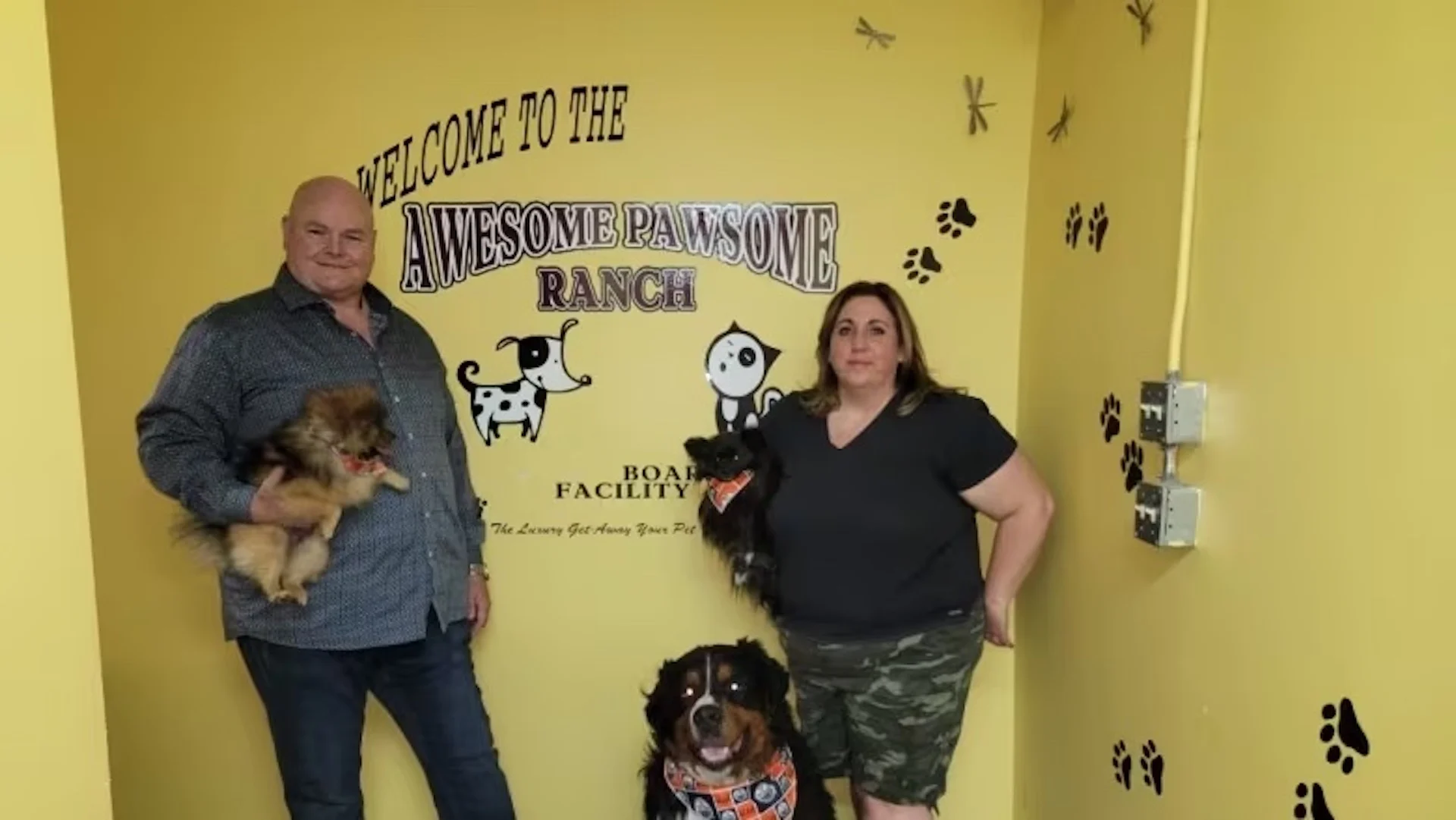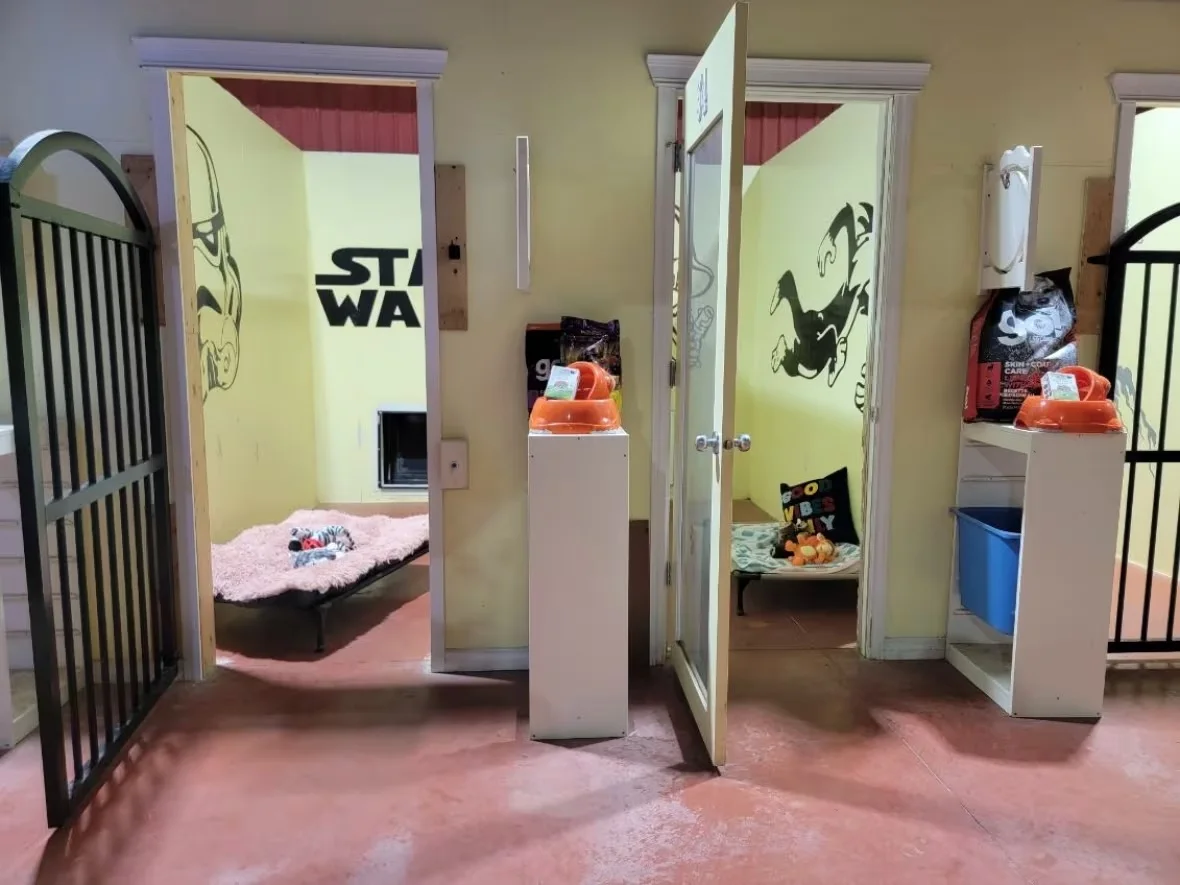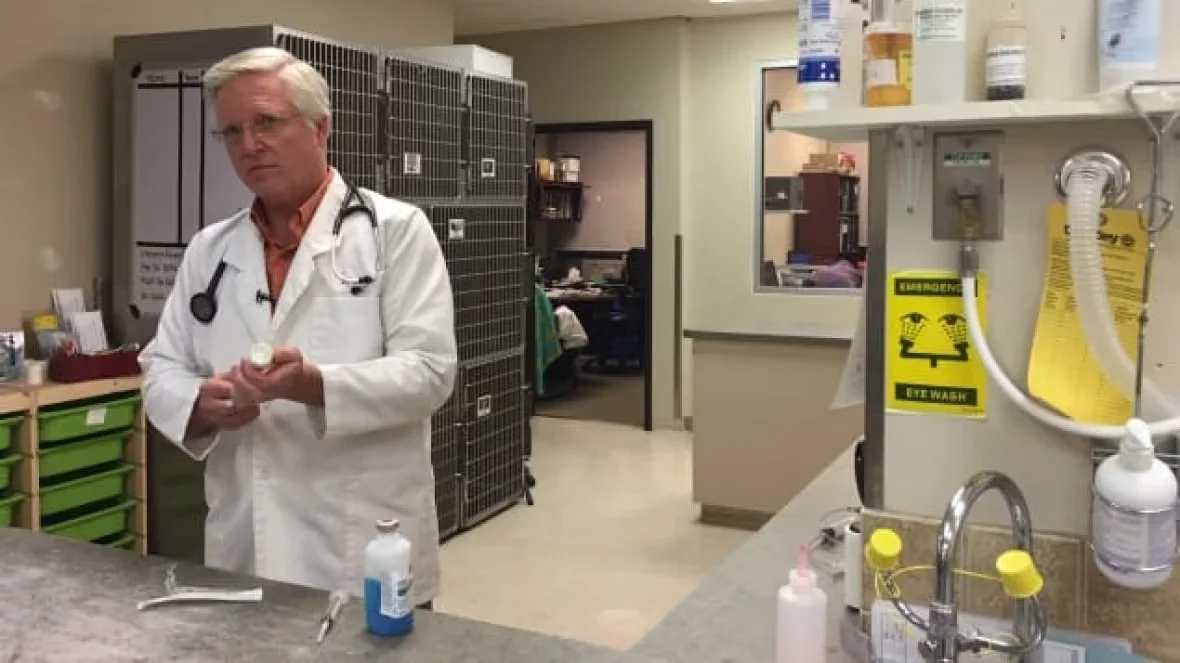
Pets of Alberta wildfire evacuees find safety in impromptu shelters
With wildfires prompting thousands of Albertans to leave their homes, many residents have scrambled to find transportation and lodging for their dogs, cats, horses and other animals.
The City of Edmonton started setting up an animal shelter at the Edmonton Expo Centre on Friday, estimating that morning that an equal number of people and pets had arrived at the emergency hub.
RELATED: Farmers rush to save livestock as wildfires rip through Alberta
Alexis Gigg, communications and marketing co-ordinator for the Drayton Valley Cause for Critters charity, said board members and volunteers packed dozens of cats and kittens into carriers and a two-level rolling kennel on Thursday night. The group also moved dogs and one bunny to a farm about 10 minutes outside of town.
"We were lucky that one of our board members, our vice-president, had a horse trailer. If she did not, I honestly don't know what we would have done," she said.
Gigg said she and her family are currently staying in her downtown Edmonton condo, sharing the space with two dogs and six cats.
"It's fairly tight, fairly interesting, but we're making it work at the moment," she said.
Business offers free boarding
Shanin Neff, who owns Awesome Pawsome Ranch Pet Hotel and Grooming Services, south of Spruce Grove, said she heard at 4 a.m. Friday that many evacuees from Drayton Valley were headed to her area.
She is offering to take care of evacuees' pets for free for five days and was spreading the word by posting on social media and handing out her business cards at the Walmart parking lot in Spruce Grove on Friday.

The Awesome Pawsome Ranch in Spruce Grove is offering free boarding for five days for wildfire evacuees' pets. (Submitted by Shanin Neff)
Two evacuee families have dropped off dogs at the ranch and Neff is expecting more pets will arrive.
Neff said she accommodated cats, dogs, hamsters, gerbils and rabbits from Fort McMurray during the 2016 wildfire.
"If it's got four legs, no problem," she said.
She said back in 2016, animals took a few days to settle in and some seemed stressed, chewing on their dog beds.
Multiple moves
Crystal Gray, president of For All Animals Rescue Society in Drayton Valley, said her home was just outside the evacuation area on Thursday so she did not have to leave that night but did so as a precaution.
She loaded nine cats, four dogs and one rabbit into the school bus she drives and brought them to a coworker's property, but they all returned to her home Friday morning.
She kept the animals in a quarantine room with kennels ready to go.
Later on Friday afternoon, when the evacuation area expanded to include her area, she moved all the animals again — to a foster's home.
Advice from experts
Dr. Carmen Bell of Stony Plain Veterinary Clinic said if residents who think they may have to leave home in the coming days could contact local clinics to request medication for stress.
She suggests using items like pressure wraps, feeder toys and blankets to keep pets feeling safe and stimulated.
"If they're going to a smaller space then they're probably going to have to increase the amount they're getting out of that space, so more walks," she said.
Dr. Louis Kwantes, a veterinarian in Sherwood Park and past-president of the Canadian Veterinary Medical Association, said some pets handle stressful situations better than others.

Dr. Louis Kwantes, a veterinarian in Sherwood Park, says some pets have a difficult time adjusting to new environments. (Josée St-Onge/Radio-Canada)
"When you're going to evacuate to an area where there are a lot of other people, and maybe other pets, then safety for other pets and people is paramount," he said.
Veterinarians and rescue staff advise Albertans who have pets and live in wildfire-prone areas to prepare emergency kits including litter boxes, food, water, medical records and carriers.
"If everybody would have done that, it probably would have made a lot of this transition easier," Gigg said.
WATCH: These wildfire terms could help keep you safe this summer
Thumbnail courtesy of Shanin Neff via CBC.
The story, written by Madeleine Cummings, was originally published for CBC News.










